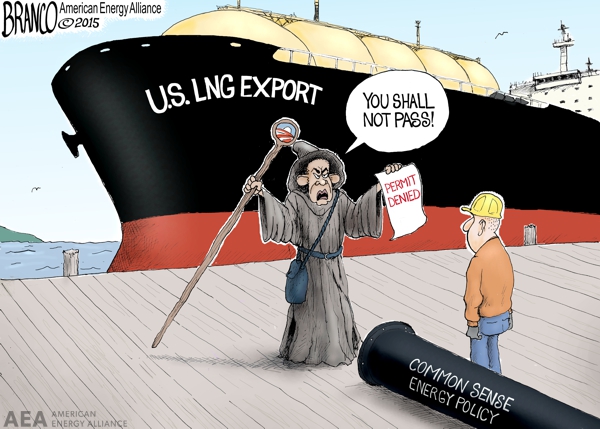The Hidden Threat to America’s Energy Boom
In December, the Obama administration released revised Draft Guidance to examine the impacts of climate change under the National Environmental Policy Act (NEPA). NEPA requires that federal agencies look at the environmental impact of their major actions. The administration’s new greenhouse gas guidance would make an already costly and time-consuming process even more onerous without providing any new and actionable information.
This administration’s proposal is the latest move by the administration to make it more difficult to spend federal dollars on any infrastructure projects—including the expenditure of funds for permitting of projects—and the guidance is designed to make it more difficult to produce natural gas, oil, and coal in the United States – if those activities lead to an increase in carbon dioxide.
For example, this guidance would make it more difficult to produce, use, and export natural gas. America is the number one natural gas producer in the world, with production surging 55 percent since September 2005. We have so much natural gas that we can now export a lot of it to our allies and still keep prices affordable here at home. A study commissioned by the U.S. Energy Department found that the U.S. can expect “to gain net economic benefits from allowing LNG exports” and that “scenarios with unlimited exports always had higher net economic benefits than corresponding cases with limited exports.”
Our ability to realize these economic benefits depends on securing timely approval of new LNG projects. Yet this new guidance adds more red tape to an already burdensome process. As the Center for Liquefied Natural Gas notes in public comments, the draft guidance would “undermine regulatory certainty by adding significant costs and delays to LNG export projects while potentially leaving the process vulnerable to unnecessary litigation.”
It is conceivable (and not clear from the guidance) that a project could be held up because opponents of all hydrocarbon use would argue that a project requiring a permit insufficiently assessed the impact of the project on global carbon dioxide emissions from direct and indirect sources. An export facility, it could be alleged, not only produces carbon dioxide or allows carbon dioxide-producing natural gas to flow through it, but also then may allow economic expansion because it provides affordable energy to enable a steel mill to operate, which might produce more steel; but also, more carbon dioxide. The list of “what ifs” becomes infinite in the hands of creative and clever lawyers, whose intent it is to slow construction of facilities that might expand the use of hydrocarbons in the U.S. or the world.
The Institute for Energy Research has exposed the numerous flaws with the administration’s draft guidance. In March, IER called for the guidance to be withdrawn, noting it “is internally inconsistent, fails to require information about climate change itself, is inconsistent with NEPA, is inconsistent with current NEPA regulations, is inconsistent with case law, and uses the arbitrary and capricious social cost of carbon.”
For example, the draft guidance requires that if cost and benefits of a proposed actions are calculated, then the social cost of carbon (SCC) should be used to “monetize” the climate change impacts. As we have explained a number of times, the social cost of carbon is wholly arbitrary. As MIT economist Robert Pindyck wrote in a peer-reviewed publication, the Integrated Assessment Models (IAMs) used to estimate the SCC…
have crucial flaws that make them close to useless as tools for policy analysis: certain inputs (e.g. the discount rate) are arbitrary, but have huge effects on the SCC estimates the models produce; the models’ descriptions of the impact of climate change are completely ad hoc, with no theoretical or empirical foundation; and the models can tell us nothing about the most important driver of the SCC, the possibility of a catastrophic climate outcome. IAM-based analyses of climate policy create a perception of knowledge and precision, but that perception is illusory and misleading. [emphasis added]
Pindyck continued:
When it comes to the damage function, however, we know almost nothing, so developers of IAMs [Integrated Assessment Models] can do little more than make up functional forms and corresponding parameter values. And that is pretty much what they have done.
A tool that is “close to useless” for policy analysis should not be required to be used by this guidance. This is especially true for something that is basically “made up.” But the administration wants to use the social cost of carbon because it give the illusion of large costs.
The social cost of carbon provides the illusion of large impacts from greenhouse gas emissions that have no discernable impact on the actual climate. As the House Natural Resources Committee explains, many federal agencies believe carbon dioxide emissions from their activities “will have small, if any, potential climate change effects.” Yet the administration now wants agencies to consider climate change effects for nearly everything they do.
The Natural Resources Committee held a hearing this week on the draft guidance. We hope Congress uses every tool at its disposal to shine a light on this power grab so Americans can continue to enjoy the benefits of domestic energy production without further interference from federal bureaucrats.


Speak Your Mind